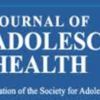Purpose
There is growing evidence that racial, ethnic, and socioeconomic status (SES) differentials in health emerge early in life. This study provided a descriptive profile of allostatic load (AL) among adolescents, focusing on sociodemographic correlates and variation in age patterns of AL by race and ethnicity. Allostatic load, an index of cumulative physiological dysregulation, is a construct that measures how individuals' interactions with their environment “get under the skin” to influence health.
Methods
We used data from 8,052 adolescents ages 12–19 years, from the United States National Health and Nutrition Examination Survey 1999–2008. A summary measure of AL was assessed with biomarkers representing cardiovascular, inflammatory, and metabolic systems. Weighted univariate, bivariate, and multivariable negative binomial regression statistics were employed.
Results
Mean AL increased with age, was higher for blacks than whites or Mexican-Americans, and was higher among adolescents of lower SES. Although black adolescents had higher AL for all ages, the relative advantage of whites and Mexican-Americans declined with age.
Conclusions
Racial and SES inequalities in AL exist during adolescence. These findings contribute to the understanding of how early life adverse factors “get under the skin,” and are potentially translated into disease outcomes and health disparities later in life.
http://www.jahonline.org/article/S1054-139X(13)00266-8/abstract
Short on time? Use our Category Search page.





Comments (0)